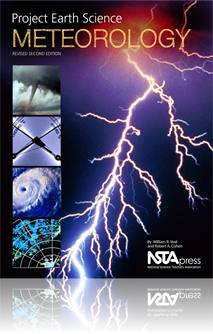All Book Chapters
Book Chapter
A wave is a disturbance that transmits energy from one location to another. In the ocean, most waves are created by the action of the wind over the surface. The interaction of the waves with the bottom near the shore causes the waves to break. Larger...
Book Chapter
Water is often called the universal solvent because so many substances will dissolve in it. Why do so many substances dissolve readily in water? In this Activity, you will explore the solubility of various substances in water as compared with other l...
Book Chapter
The ocean plays a fundamental role in many ways: from affecting the global climate and its variability, to phenomena such as El Niño, to the dispersal of pollutants such as oil spills. Understanding the dynamics controlling the ocean is essential to...
Book Chapter
If you have ever gone swimming in an ocean, or better yet, in Great Salt Lake, Utah, you may have noticed that it was easier to float in the ocean or in Great Salt Lake than in a pool or freshwater lake. Why is this? In the first part of this Activit...
Book Chapter
Ocean water is not the same everywhere. In some places, the water is colder or deeper than in other places. Some parts are denser or contain differing amounts of dissolved salts than other parts. All these things affect the way ocean water behaves. ...
Book Chapter
The Myth of Davy Jones’s Locker
For centuries, sailors believed that bodies buried or lost at sea did not sink to the bottom. They believed that a special depth existed between the surface and the bottom of the ocean where a body would remain suspended. Sailors called this region o...
Book Chapter
Estuaries — Where the Rivers Meet the Sea
An estuary is a body of water partially enclosed by land that has a connection to a river or stream, and an opening to the ocean. They are places where freshwater coming from rivers and streams mixes with salty ocean water. In this Activity, you will...
Book Chapter
Recycled Water: The Hydrologic Cycle
If we cannot see the water vapor, how do we know water vapor exists? In this Activity, you will examine the evidence regarding the presence of water vapor in the air and explore how water vapor plays a key role in the formation of clouds and rain....
Book Chapter
Lightning is not only visually spectacular; it is also dangerous. Lightning is one of the leading causes of weather-related deaths and injuries in the United States each year, not to mention damage to property. Knowing the properties of lightning,...
Book Chapter
In this Activity, students write an original, creative story about the movement of a water molecule through the hydrologic cycle....
Book Chapter
Measurement scales are standard values that can be used to compare properties. In meteorology, several scales may be used for the same quantity, depending on the purpose. For example, in the United States, temperature is frequently measured in ter...
Book Chapter
Have you ever looked up in the sky and seen a cloud in the shape of an animal? Regardless of the shape or size, certain conditions need to be present for a cloud to form. In this Activity, you will explore the conditions that must be present for clou...
Book Chapter
If you watch the local news, you have probably heard meteorologists talk about the humidity as well as the temperature. In this Activity, you will use the fact that the amount of water vapor at saturation depends on the temperature to determine how h...
Book Chapter
Snowflakes are made of ice. We think of ice as being frozen water. However, if you have ever seen a snowflake, chances are you have noticed that snowflakes do not look like most examples of frozen water we are used to seeing (e.g., ice cubes, icicles...
Book Chapter
Have you ever heard the word “muggy” used to describe the weather? How about the phrase “hazy, hot, and humid”? These phrases are used to describe times when there is considerable moisture in the air. In this Activity, you will measure humidi...



